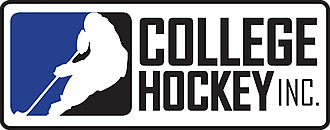


NCAA hockey offers student-athletes the chance to play high-level hockey and at the same time pursue higher education – an opportunity that in many ways is only available in the United States.
That’s a big reason that NCAA hockey is more popular among international players than ever before. Approximately 30% of all NCAA Division I men’s players are Canadian, while more than 100 – a record number – came from Europe in 2018-19.
NCAA Recruiting | NCAA Eligibility
“Just the opportunity to do both – go to school and play hockey and develop at a high level,” said NHL forward Gustav Nyquist. “In Sweden, you have to turn pro or you have to go to school; you can’t do both at the same time. I think college sports in general is a great opportunity. I loved my years at Maine. Those are some of the best years of my life. I had a blast up there.”
NCAA hockey has no restrictions on the number of import players, though all international players must meet the same eligibility requirements as American players.
Of particular note:
All Division I NCAA student-athletes must meet minimum academic criteria that take into account high school grades as well as scores on standardized tests (the SAT or ACT). Those scores are weighted on a sliding scale to determine initial eligibility.
International students may have specific requirements based on their nationality. For more information:
NCAA student-athletes are amateurs and cannot have played for a professional sports team prior to enrollment.
For Canadian men’s players, this typically concerns their dealings with teams in the Canadian Hockey League (OHL, QMJHL or WHL). The NCAA considers those leagues professional and players who signed a contract or played a game in those leagues face significant eligibility consequences.
For European players, amateurism concerns can arise if players signed professional contracts or played with professional players in their native countries. Many – but not all – European players will play in North American junior leagues prior to playing NCAA Division I hockey.